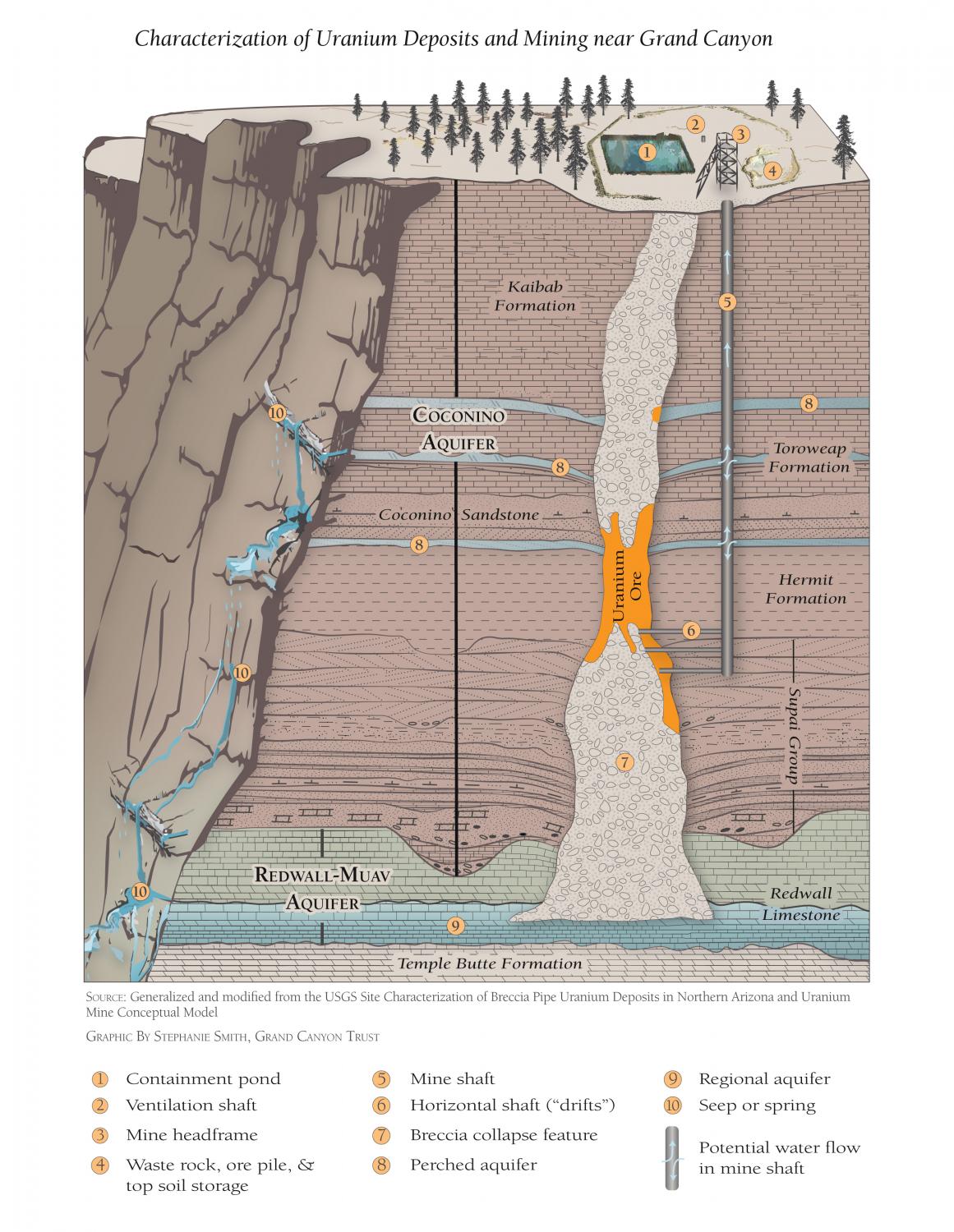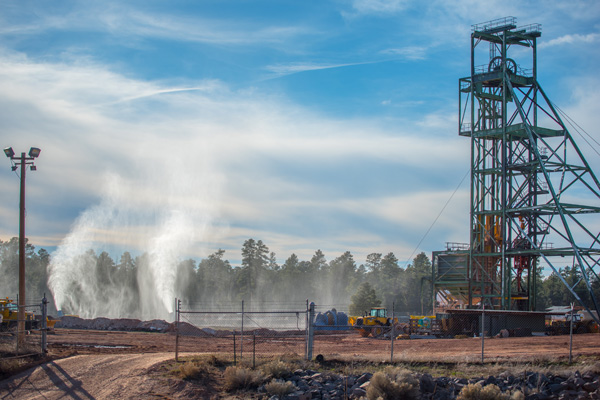FOR IMMEDIATE RELEASE
GRAND CANYON NATIONAL PARK, AZ — Conservation groups called on Arizona officials today to close a uranium mine near Grand Canyon National Park’s south rim, citing severe and ongoing flooding that threatens to pollute deep aquifers that feed the canyon’s springs. Original mine approvals dismissed flooding as a “remote” possibility.
In a letter to the Arizona Department of Environmental Quality (ADEQ), the groups urged the agency to require Energy Fuels Resources to immediately plug shallow aquifers flooding the Canyon Mine. The letter also called for the agency to limit the company’s aquifer protection permit to mine closure, post-closure maintenance, and full bonding. The current permit expires August 31.
“Flooding that regulators said was nearly impossible is now severe, threatening irreversible harm to the Grand Canyon’s precious aquifers and springs,” said Taylor McKinnon, senior public lands campaigner at the Center for Biological Diversity. “These risks aren’t worth taking. It’s time to stop the flooding and close the mine.”
In 2016, mine-shaft drilling pierced shallow aquifers, causing water pumped from the mine to spike from 900,000 gallons to nearly 9 million gallons in 2017 and 10 million gallons in 2018. In 2017, miners sprayed the contaminated water into the air on the Kaibab National Forest because the water exceeded the facility’s wastewater-storage capacity. Since 2016, dissolved uranium in that water has consistently exceeded federal toxicity limits by more than 300 percent.
“If you find yourself in a hole filled with poison, stop digging,” said the Grand Canyon Trust’s Roger Clark. “Sadly, we see how regulatory agencies can buy lies as facts, while legitimate concerns are not just ignored — they are purged from the public record. Praise to former state employee Gary Ullinskey, who saw clearly how uranium-contaminated water can permanently pollute Grand Canyon’s precious groundwater. And shame on those regulators who still turn a blind eye to the truth.”
The flooding disproves a central premise of the U.S. Forest Service’s 1986 environmental impact statement approving the mine, which said that the “low potential for encountering groundwater in the mine effectively eliminates the possibility of contaminating the Redwall-Muav aquifer.” In 2012 the Forest Service refused to update that analysis, which the state has since relied on, stating that “very little has changed since the 1986 (analysis).”
“The Arizona Department of Environmental Quality is mandated to protect our environment, including protecting our precious groundwater from toxic pollutants such as uranium,” said Sandy Bahr, chapter director for Sierra Club’s Grand Canyon (Arizona) Chapter. “Unfortunately, the agency backed off on saying no to the permit for Canyon Mine and allowed it to go forward with minimal requirements. It is time for ADEQ to right that wrong and stop the flooding and start efforts to address this mess.”
As early as 1986, some state officials warned that mining could pierce and drain shallow aquifers into the mine and contaminate the regional groundwater that feeds seeps and springs throughout the Grand Canyon. Scores of hydrologists have since echoed that warning, pointing to more recent science suggesting that uranium mines could contaminate and deplete aquifers connected to Grand Canyon springs.
“The pristine springs and seeps of Grand Canyon are literally life-support in this precious landscape,” said Kelly Burke, executive director of Wild Arizona. “Ignoring and burying state officials’ and hydrologists’ warnings about Canyon Mine has already proved disastrous on an alarming scale. ADEQ is now in the solid position to call for a halt to mining operations and act swiftly to mitigate what harm we still can.”
Neither the state of Arizona nor the Forest Service requires monitoring to determine whether water flooding into the mine is reaching the Redwall-Muav aquifer, one of the state’s largest. The agencies also don’t require downgradient monitoring wells to detect pollution in the aquifer, which would be impossible to clean up.
“Nobody knows whether the Canyon Mine is polluting the Redwall aquifer because there’s no downgradient aquifer monitoring,” said Bahr.
Energy Fuels has been lobbying the Trump administration on several fronts. The Canada-based company hired Andrew Wheeler, now administrator of the Environmental Protection Agency, to lobby President Trump to shrink Bears Ears National Monument in Utah. Energy Fuels owns a uranium processing mill and has hundreds of active mining claims in the area.
The mining industry also challenged an Obama-era ban on new uranium mining around the Grand Canyon, but federal courts upheld the 20-year moratorium. Energy Fuels unsuccessfully petitioned the administration for uranium quotas, which would have raised prices and reignited the U.S. uranium industry.


